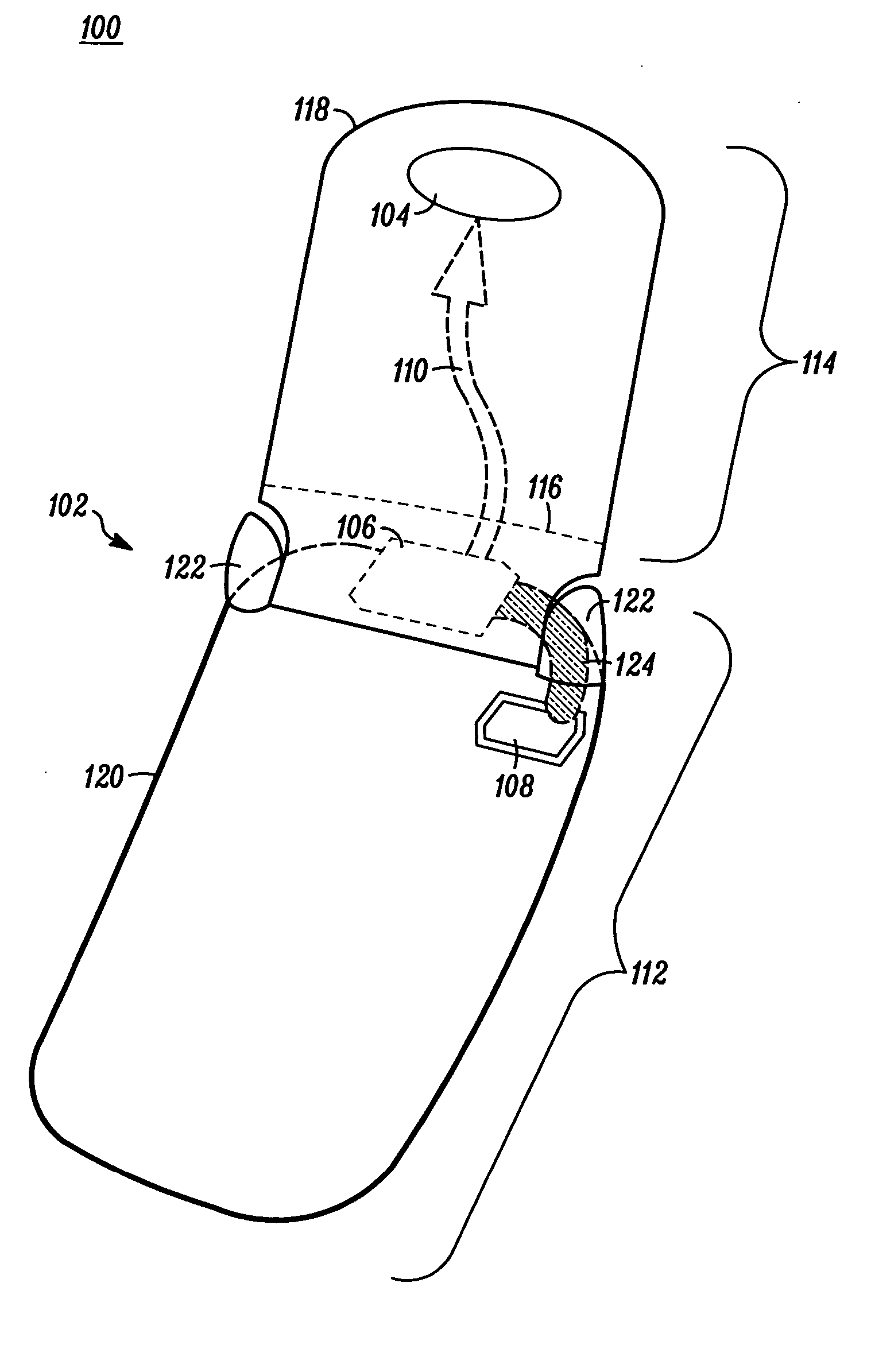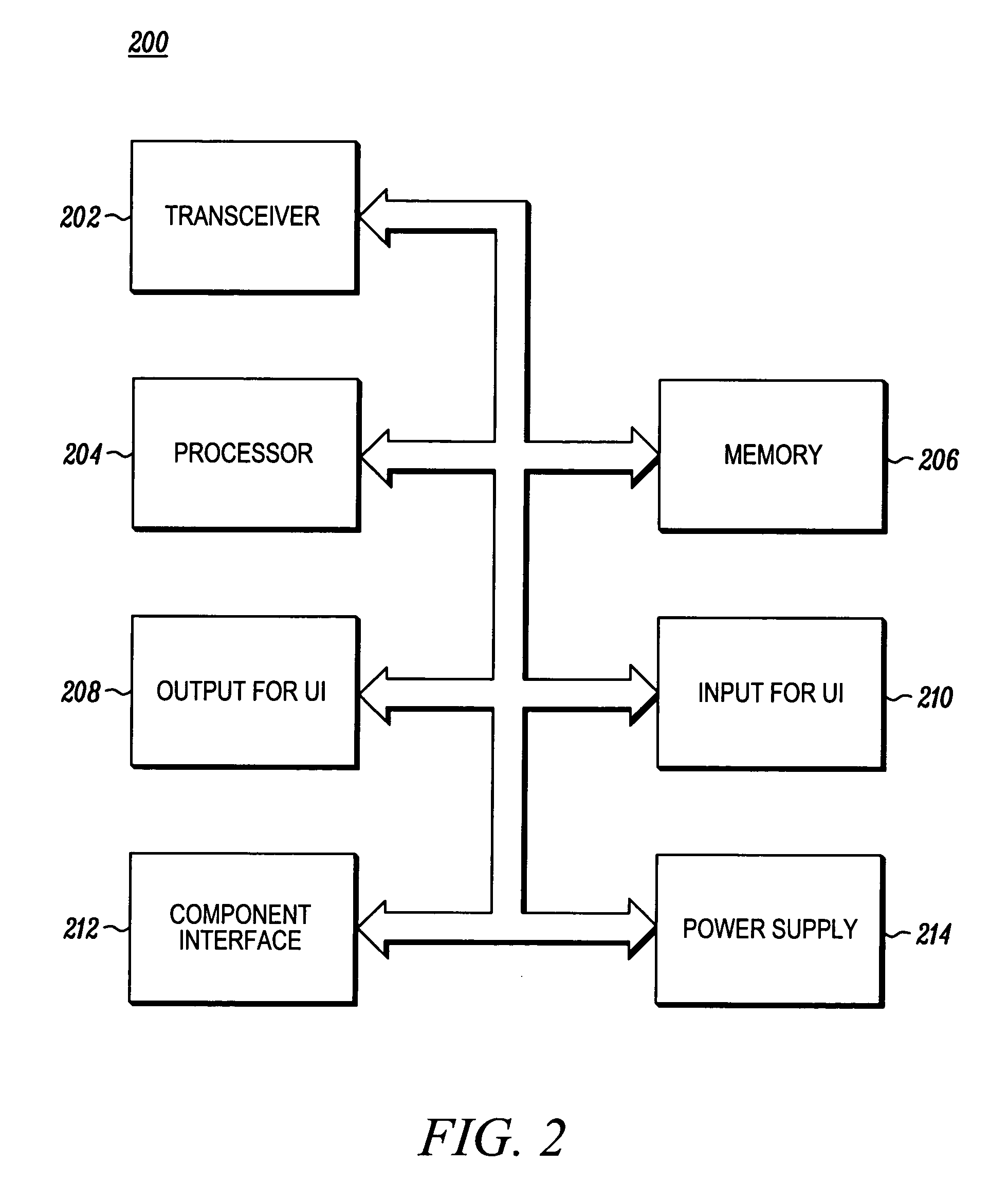Wireless communication device having electromagnetic compatibility for hearing aid devices
a technology of hearing aids and wireless communication devices, which is applied in the direction of devices with bluetooth interfaces, substation equipment, electrical appliances, etc., can solve the problems of hearing impaired, people who use hearing aid devices, and may experience unique problems with their wireless communication devices, so as to achieve the effect of reducing the interference between a wireless communication device and a hearing aid device, and improving the sound quality of the hearing impaired
- Summary
- Abstract
- Description
- Claims
- Application Information
AI Technical Summary
Benefits of technology
Problems solved by technology
Method used
Image
Examples
Embodiment Construction
[0011] A wireless communication device, in accordance with the present invention, minimizes electromagnetic interference with hearing aid devices while minimizing any adverse effects to the radiation performance of the device. An upper portion of the wireless communication device includes an ear piece and, thus, the upper portion is the portion closest to a hearing aid device during a call. By controlling the material composition of the upper portion of the wireless communication device, the electromagnetic energy level at the ear piece may be minimized. In particular, electromagnetic energy levels may be minimized at areas where non-electromagnetic conductive materials, such as non-metallic materials, are used. Electromagnetic conductive materials should not exist, or should be minimized, at all parts of the upper portion, including the housing of the upper portion itself as well as all components supported and / or enclosed by the upper portion of the housing. As a result, high leve...
PUM
 Login to View More
Login to View More Abstract
Description
Claims
Application Information
 Login to View More
Login to View More - R&D
- Intellectual Property
- Life Sciences
- Materials
- Tech Scout
- Unparalleled Data Quality
- Higher Quality Content
- 60% Fewer Hallucinations
Browse by: Latest US Patents, China's latest patents, Technical Efficacy Thesaurus, Application Domain, Technology Topic, Popular Technical Reports.
© 2025 PatSnap. All rights reserved.Legal|Privacy policy|Modern Slavery Act Transparency Statement|Sitemap|About US| Contact US: help@patsnap.com



